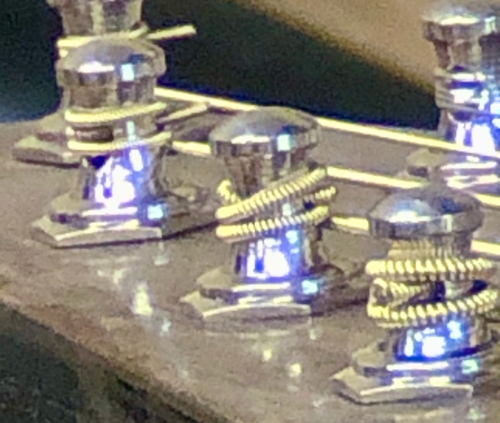midnightright
Member
- Joined
- Aug 25, 2011
- Messages
- 384
- Reaction score
- 113
Yeah, it looks exactly like that, except that there is that first wrap (or whatever you want to call it) is going over, or above the string sticking out of the hole, pointing upwards, and to the left. There are no sharp bends, or whatever other poor word choices I’d used.
I’m constantly adjusting and applying pressure with my left index finger and thumb to get it just right at the tuning post as well. I don’t have a guitar now that I can do it with to show you an example. And even if I did, it’s a pretty safe bet I wouldn’t be smart enough to figure out how to post it!
Thanks again-
And I can’t believe it did that to that laminate top! I should also note that my cat likes to hover around me at all times when playing, and so there’s a constant concern for her: it’s like I’m a jungle gym...
I’m constantly adjusting and applying pressure with my left index finger and thumb to get it just right at the tuning post as well. I don’t have a guitar now that I can do it with to show you an example. And even if I did, it’s a pretty safe bet I wouldn’t be smart enough to figure out how to post it!
Thanks again-
And I can’t believe it did that to that laminate top! I should also note that my cat likes to hover around me at all times when playing, and so there’s a constant concern for her: it’s like I’m a jungle gym...

